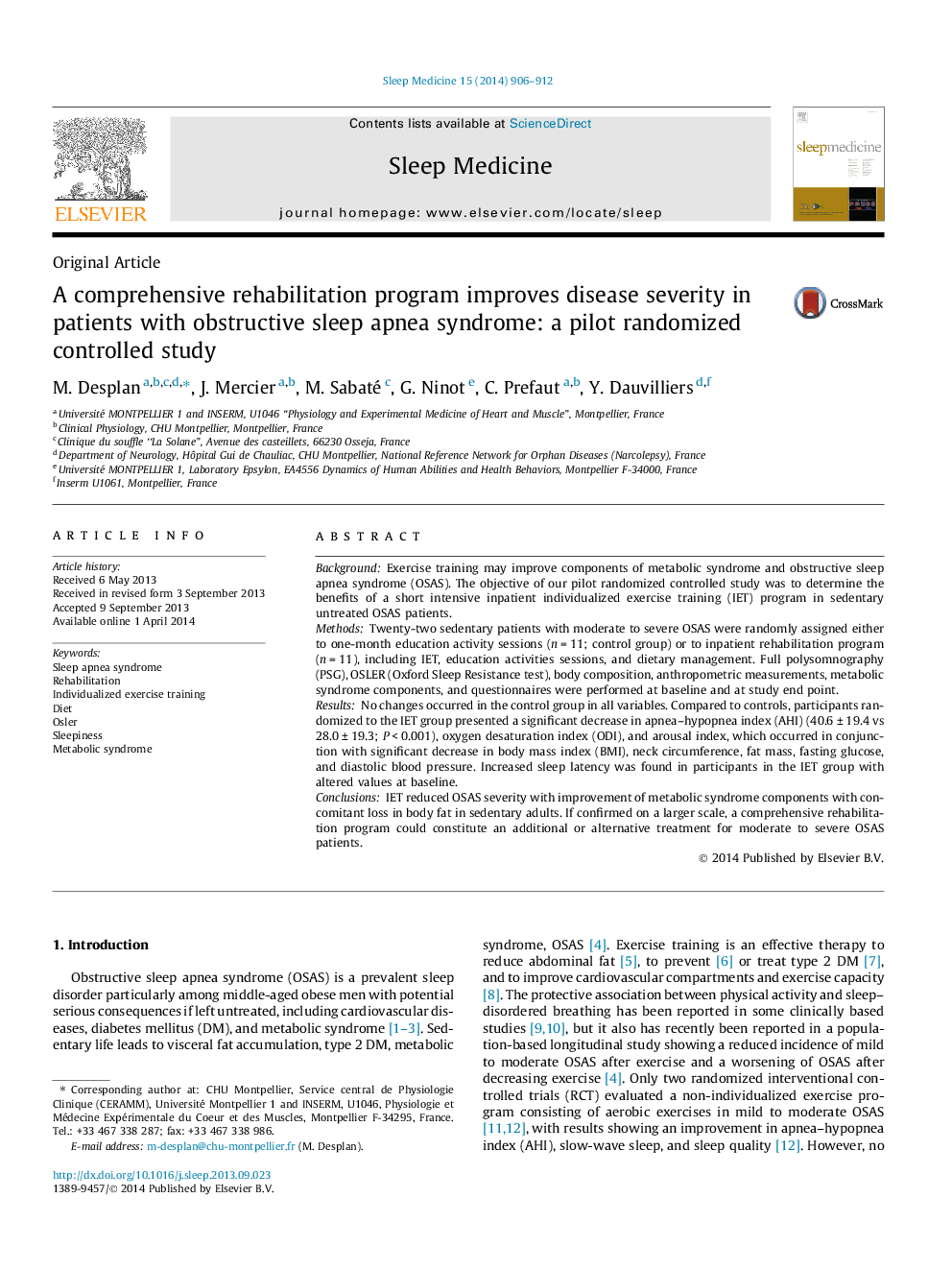| Article ID | Journal | Published Year | Pages | File Type |
|---|---|---|---|---|
| 3176089 | Sleep Medicine | 2014 | 7 Pages |
BackgroundExercise training may improve components of metabolic syndrome and obstructive sleep apnea syndrome (OSAS). The objective of our pilot randomized controlled study was to determine the benefits of a short intensive inpatient individualized exercise training (IET) program in sedentary untreated OSAS patients.MethodsTwenty-two sedentary patients with moderate to severe OSAS were randomly assigned either to one-month education activity sessions (n = 11; control group) or to inpatient rehabilitation program (n = 11), including IET, education activities sessions, and dietary management. Full polysomnography (PSG), OSLER (Oxford Sleep Resistance test), body composition, anthropometric measurements, metabolic syndrome components, and questionnaires were performed at baseline and at study end point.ResultsNo changes occurred in the control group in all variables. Compared to controls, participants randomized to the IET group presented a significant decrease in apnea–hypopnea index (AHI) (40.6 ± 19.4 vs 28.0 ± 19.3; P < 0.001), oxygen desaturation index (ODI), and arousal index, which occurred in conjunction with significant decrease in body mass index (BMI), neck circumference, fat mass, fasting glucose, and diastolic blood pressure. Increased sleep latency was found in participants in the IET group with altered values at baseline.ConclusionsIET reduced OSAS severity with improvement of metabolic syndrome components with concomitant loss in body fat in sedentary adults. If confirmed on a larger scale, a comprehensive rehabilitation program could constitute an additional or alternative treatment for moderate to severe OSAS patients.
